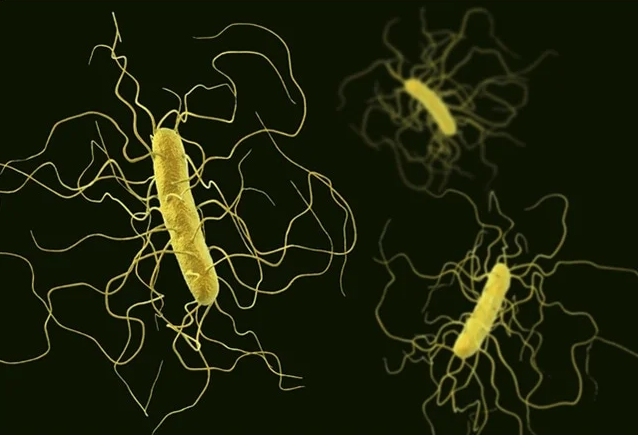𝘊𝘭𝘰𝘴𝘵𝘳𝘪𝘥𝘪𝘰𝘪𝘥𝘦𝘴 𝘥𝘪𝘧𝘧𝘪𝘤𝘪𝘭𝘦 (𝘊. 𝘥𝘪𝘧𝘧𝘪𝘤𝘪𝘭𝘦) is a pathogenic bacterium responsible for antibiotic-associated diarrhea and healthcare-associated infections, particularly in North America and Europe. Treatment guidelines recommend oral fidaxomicin or vancomycin for 𝘊. 𝘥𝘪𝘧𝘧𝘪𝘤𝘪𝘭𝘦 infection (CDI) due to their efficacy in targeting the bacterium while sparing commensal gut bacteria. However, antimicrobial resistance in 𝘊. 𝘥𝘪𝘧𝘧𝘪𝘤𝘪𝘭𝘦 poses challenges to treatment efficacy and patient outcomes.
Researchers in this study explore antimicrobial resistance mechanisms in 𝘊. 𝘥𝘪𝘧𝘧𝘪𝘤𝘪𝘭𝘦 based on recent research data.
Key Findings:
- Resistance to Fidaxomicin:
- In vitro tests indicate a favorable minimum inhibitory concentration (MIC) distribution for fidaxomicin against 𝘊. 𝘥𝘪𝘧𝘧𝘪𝘤𝘪𝘭𝘦 isolates.
- However, reduced susceptibility to fidaxomicin, with MICs ranging from 16 mg/L to >64 mg/L, has been observed in clinical isolates, primarily due to point mutations in genes encoding RNA polymerase subunits.
- Fidaxomicin resistance mechanisms involve mutations in genes rpoB and rpoC.
2. Resistance to Vancomycin:
- Clinical isolates of 𝘊. 𝘥𝘪𝘧𝘧𝘪𝘤𝘪𝘭𝘦 have demonstrated reduced susceptibility to vancomycin, attributed to mutations in regulatory genes vanS and vanR, leading to constitutive expression of the vanGCd operon.
- The prevalence of vancomycin resistance in 𝘊. 𝘥𝘪𝘧𝘧𝘪𝘤𝘪𝘭𝘦 has shown variability over time, potentially influenced by increasing vancomycin usage.
3. Resistance to Metronidazole:
- Plasmid-mediated resistance to metronidazole, mediated by plasmid pCD-METRO, has been identified in clinical isolates, resulting in elevated MICs (8–32 mg/L).
- Mutations in the promoter region of the nimB gene (PnimBG) and truncations in chromosomal genes hsmA and feoB1 have also been associated with metronidazole resistance in 𝘊. 𝘥𝘪𝘧𝘧𝘪𝘤𝘪𝘭𝘦.
4. Genomic Surveillance and Predictive Markers:
- Genome sequencing analyses have identified genetic determinants associated with reduced susceptibility to therapeutic antibiotics.
- Surveillance studies using genome sequence data have provided insights into the prevalence and distribution of antimicrobial resistance markers in 𝘊. 𝘥𝘪𝘧𝘧𝘪𝘤𝘪𝘭𝘦 populations.
- Some mutations, such as frameshift mutations in the marR gene, have been identified in clinical strains, while others have only been observed in laboratory-selected strains.
5. Clinical Significance and Epidemiological Trends:
- Resistance to therapeutic antibiotics in 𝘊. 𝘥𝘪𝘧𝘧𝘪𝘤𝘪𝘭𝘦 remains rare, with most mutations detected in <0.1% of genome sequences.
- Epidemiological trends indicate fluctuations in the prevalence of specific resistance mechanisms over time, potentially influenced by measures to control healthcare-associated CDI outbreaks.
- Novel antimicrobial drugs and non-antimicrobial approaches, including monoclonal antibodies and fecal microbiota transplantation, are being explored as alternative treatments for CDI, particularly in cases of recurrent infection.
Antimicrobial resistance in 𝘊. 𝘥𝘪𝘧𝘧𝘪𝘤𝘪𝘭𝘦 poses challenges to the effective management of CDI, highlighting the importance of surveillance, molecular characterization, and understanding the clinical significance of resistance mechanisms. While resistance to fidaxomicin, vancomycin, and metronidazole remains relatively rare, ongoing research efforts are needed to monitor resistance trends, develop predictive markers, and explore alternative treatment strategies for CDI.
Limitations:
- The genomic record may not fully represent the global diversity of C. difficile populations, potentially limiting the generalizability of findings.
- The clinical significance of certain resistance mechanisms and their impact on treatment outcomes require further investigation through clinical studies and surveillance programs.
Link to the study : https://tinyurl.com/mvn47jz7
